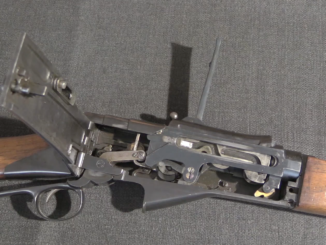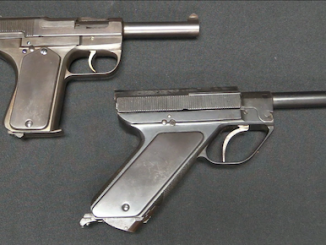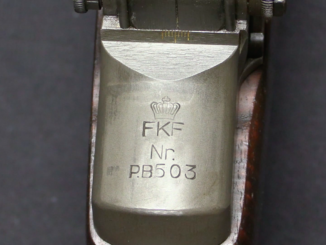The Danes adopted the M1 Garand after World War Two, and continued using it as their standard service rifle all the way until 1975 – and alongside it they used the M1D as a sniper or DMR rifle. The Danish Home Guard decided to upgrade those M1D rifles in the 1960s, however, and looked to H&K for an answer. In 1966 they adopted a model of the G3 with a 4x Hensoldt optic under the designation m/66. Today I’m at Bear Arms looking at a clone of the m/66 built by Kilo Guns on an original Danish parts kit and original surplus scope…
Related Articles

Prototype
Madsen M1888 Forsøgsrekylgevær: The Strangest Semiauto
Development of the weapon that would eventually become the very successful 1902 Madsen light machine gun began many years earlier, in 1883. Two Danes, Madsen and Rasmussen, began working on a recoil-operated self loading rifle […]

Prototype
Schouboe Model 1916: The Final Attempt
The final iteration of the Danish Schouboe pistol is this, the model 1916. Produced in prototype quantities only, it took the features of the 1910 pattern (safety and external barrel pivot) and made a few […]

Semiauto Rifles
Danish Gevaer m/50 – An American Gun Made in Italy
Dozens of countries around the world received M1 Garand rifles from the United States in the decades after World War Two, and Denmark was one of those that not only got some rifle but went […]

I have a PTR 32. The roller-locked system is interesting if somewhat obsolescent. It has a unique feel as the bolt goes back into battery. Kind of interesting that the “silent bolt closure” was a feature that PTR chose not to incorporate.
That would’ve been nice, for sure. The PTR-32 doesn’t even need the feature as much as a normal full-caliber G3.
I never understood why the Germans didn’t use the serrated carrier on their G3s or the 91s for that matter but did so on the 33s and the 93s as well.
Being Danish, and a former member of the Home Guard, as well as a former ammunition technician with the Danish Army Materiel Command, I found this very interesting.
I have one minor correction, and a bit of supplemental information:
“HTK” is the acronym for “Hærens Tekniske Korps” (“Army Technical Corps”). The HTK didn’t actually become the “Army Materiel Command” (“Hærens Materielkommando” or “HMAK”) until 1967. Both organizations were tasked with the procurement, testing, maintenance and management of army materiel.
Back in the day (shortly after the last Ice Age ended) when I was in the Home Guard, a small number of M66’s had “trickled out” to some of the Home Guard units as standard infantry rifles (sans scope). They were much sought after, due to the fact that they supposedly had a better buffer than the standard infantry rifle, giving them reduced felt recoil. Since the M66’s were rare, I never had the opportunity to actually field strip or shoot one, so I cannot comment on the veracity of this.
Keep up the good work.
Thomas L. NIELSEN
Denmark (currently expat’ed to Luxembourg)
Ah ha! Ian, your research left a gap between the Garands and the HKs as precision rifles. There was a limited number of Italian Garands converted by the Danes to mount an enormous active Infra Red projector and telescope for front line service. Some of those receivers arrived in Canada with the somewhat suspect disposal of Danish war reserve M1s in the 1980s and 90s. Go to the Garand Collectors Association summer 2021 journal for their article on Danish IR bases. Those are truly, forgotten weapons when even the most knowledgeable collective of Garand minds could be surprised.